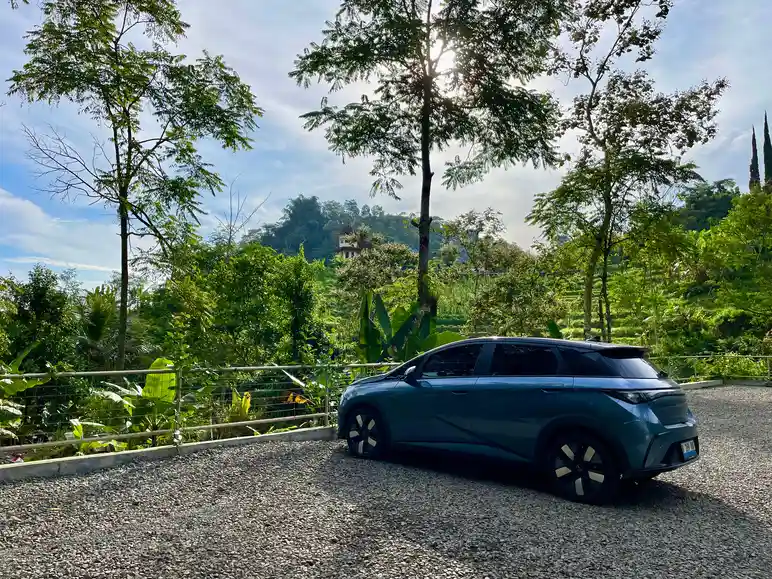
“Road-tripping is all about the journey,” says Aldito Tagor. “The local roads, the weird roadside signs, the unexpected views. That’s what makes it memorable.”
Some stretches are quiet, others loud with laughter. Comfort sustains regardless, since a road trip heads in the same direction — wherever that might be, truly.
A lot may digress to Tagor’s viewpoint.
As a driver on a long road trip, he or she attempts to hold their life together — back hurts, playlist’s on repeat, someone’s always asking the annoyingly addictive question if they're lost, and just when a decent restroom is finally found, you’ve already missed the exit, all while your passengers are succumbed to the comfort of their fully reclined seats. Whereas, being the passenger basically means becoming a human GPS, snack distributor, DJ, and therapist, as they also accept that their legroom dreams died at kilometre 12.
Mere stillness in a boxed container can take the edge off for many. But in Tagor's true essence, being on the road is special. Exploring is deeply ingrained in his soul, and that comes with sensing freedom through road trips; to stop wherever his heart desires, venture into the unexpected, and genuinely feel the journey.
“You're not just sitting in a seat waiting to arrive — you’re part of the adventure,” he gushes.
Thus, this explains his preferred approach to ride his car or motorbike whenever feasible. He is, ultimately, a road traveller; a 50/50 of comfort meets freedom type of traveller, who doesn’t shy away from sampling the unfamiliar, however quirky it may get.
Tagor had always loved road trips. He even dreams of looping through Central Java — from Bandung to Cirebon, Semarang, Salatiga, then back through Banjarnegara and Purwokerto, down to Tasikmalaya.
“If I were riding a motorcycle, I’d love to traverse Bali, from south to north. By car? Still Java. From Bandung to Banyuwangi, all via back roads. No tolls,” he points out.
Wanderers opt to chase the horizon on wheels for that sweet, spontaneous kind of liberation you just can’t pack into a flight itinerary. It’s less about the destination and more about the in-between moments. It’s magical, to say the least. Of course, it’s not all golden hour lighting and perfectly curated pit stops. The battle of fatigue is a major hurdle. Nonetheless, everything and nothing become stories. They’re the punchlines, the inside jokes, the “remember that time…” moments you’ll laugh about for years.
Java is a playground for road trips, entailed with the flawless combination of discovery and comfort that makes hitting the road the best kind of escape. Every twist and turn reveals a new tale. Drivers and passengers alike soak in the lush green rice terraces, lively and the winding mountain passes all the way to cosy little towns. The roads resemble threads weaving together affluent culture, deliciously tempting food stops, and jaw-dropping views that make every kilometre come across as a small quest.
Tagor had done a few road trips prior, even a couple of long ones, but this was his first time embracing an EV. His cousin had just bought one and was curious to test it on a longer route. They figured, why not try a trip across Java and see how this electric car holds up? A final destination too far was unappealing to the journey seekers; thus, they settled on Solo. Tagor had never done a proper holiday there, and they both liked the idea of testing the car while also having a bit of fun along the way. “It felt like the perfect excuse to eat good food, explore a few new places, and geek out about charging stations,” said the food and travel content creator.
Wheels set in motion
The hands of his analogue wristwatch swept gracefully, ticking away the seconds like whispers of time passing to 6 AM. Through their mutual soft spot for road trips, the pair revved the engine out of the metropolitan.
Their early start was filled with a consistent drizzle in the air and on the windshield. Approximately 14 hours later, they arrived at Solo after stopping here and there along the way. “Those stops honestly made it feel more like a series of mini adventures than one long drive until we finally crossed the welcome sign to Solo,” he describes.
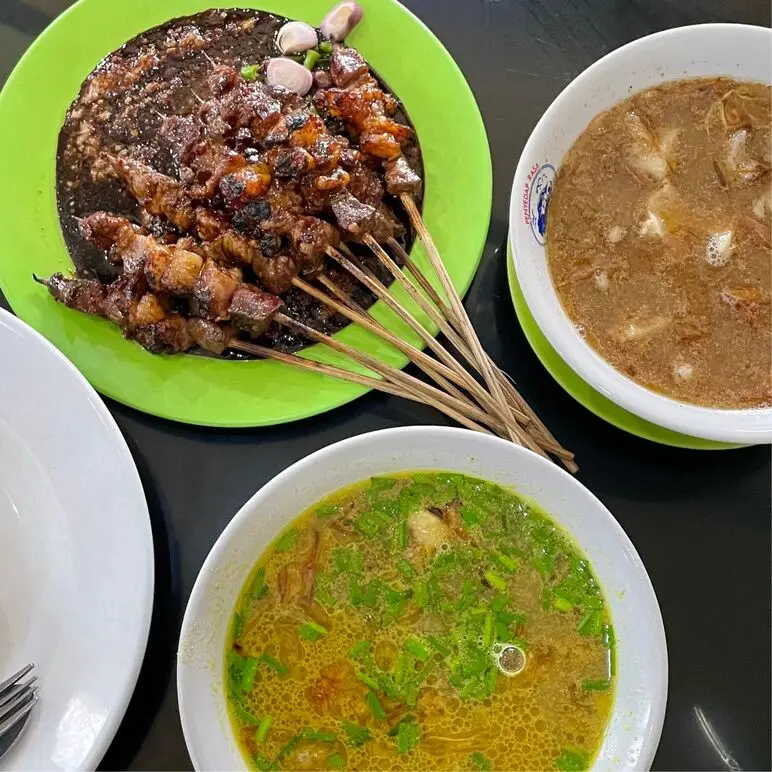
Their first stop was Cirebon because his cousin insisted on getting empal gentong and satay at a popular spot called Amarta. It did not disappoint the cousins; the tender meat and rich broth summed up the sort of comfort food they (and anyone else) would want on a road trip.
From Cirebon, they kept going and had their first real "EV experience" — charging the car. This was new territory for both of them. The longest charging session took about an hour and a half because the battery was down to around 20 per cent. But they quickly learned their lesson: don’t let it drop that low.
“If you keep it above 50 per cent, charging goes much faster. Also, if two cars are charging at the same time, the power gets split and everything slows down — so timing really matters,” he breaks down.
Next, they stopped in Kendal and ended up on Ngebum Beach, a beach that’s not particularly pretty but has its charm, he recalls. Their agenda? To eat grilled oysters by the shore that’s super fresh and affordable, costing approximately Rp30,000 for 15 pieces. The beach had that typical northern Java look — dark sand, tankers in the distance — but the pleasant breeze and food made up for it.
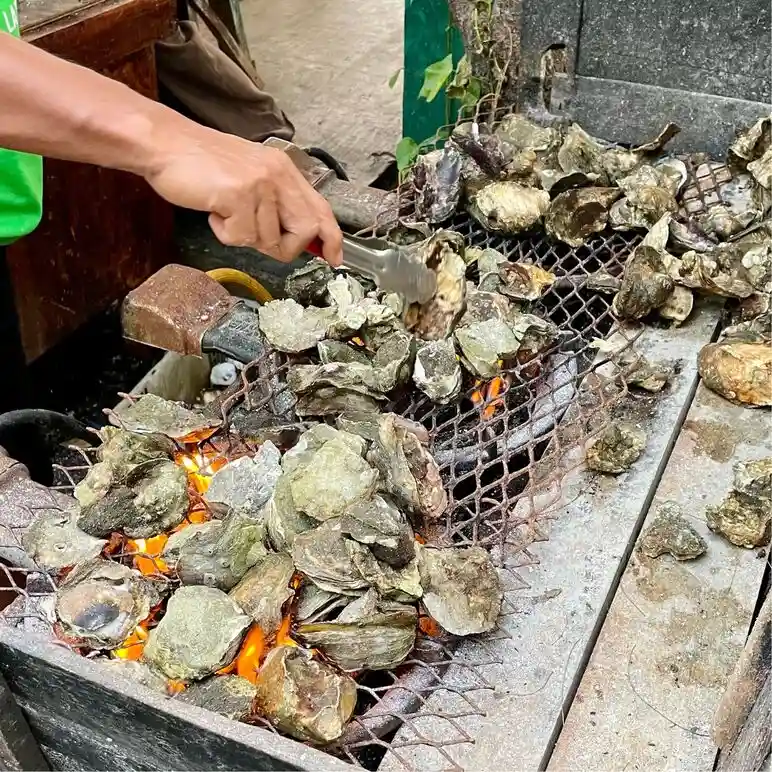
“Driving an EV also came with some unexpected quirks. Because the car is very quiet, people don’t hear you coming. In cities, it’s fine. But once we got into smaller towns, we had to honk more than usual, just to make sure motorbikes and pedestrians knew we were behind them. It felt a bit rude at first, but actually, it was more of safety,” he comments.
The cousins passed through Semarang without stopping and finally reached Solo at probably 8 or 9 PM. Their hotel was conveniently located right next to a PLN office, which made charging as smooth as a fresh-paved road. The hotel claimed to have its own charging station, but it didn’t work; therefore, they went to the PLN station instead. Once everything was sorted, they continued their culinary-esque wanderlust to a local market and found tiny martabak sold for just Rp1,000 each. Tagor beams and adds, “Honestly, that might’ve been the best dessert of the entire trip.”
In Solo, the garden of Javanese dreams
Tagor and his cousin spent four days in Solo. They left feeling content as each day was packed with food hunting, unhurried activities, and expressive art.
On their first full day, the cousins started off with a food mission to try a plate of authentic Selat Solo for the first time. The sweet, Javanese-style salad-steak hybrid at a local’s recommendation, known as Tenda Biru, became another highlight for Tagor.
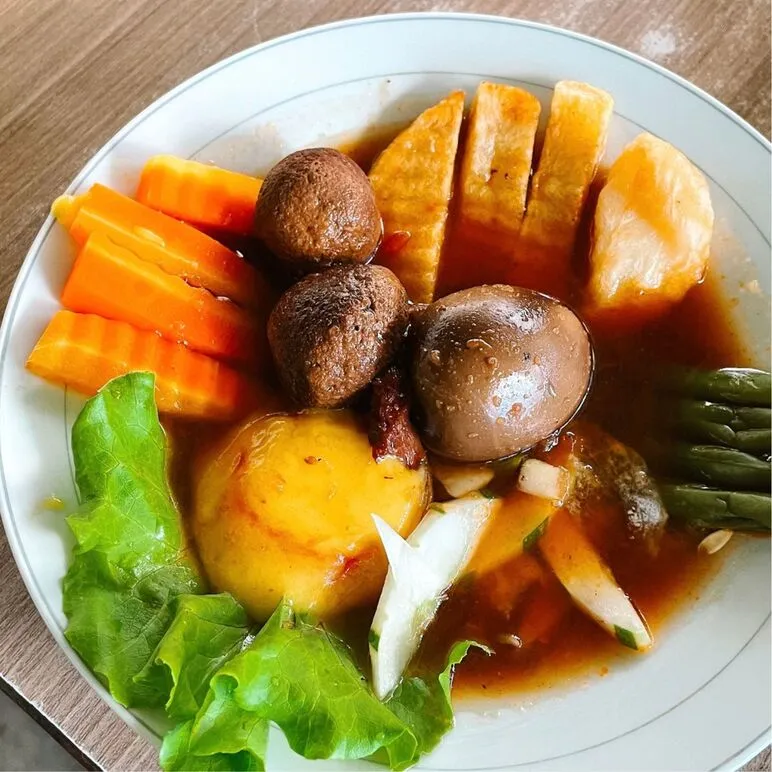
They continued the passage beneath open skies to Kemuning (somewhat Solo’s version of Lembang, Bandung). His cousin was intrigued to try walking across a tall glass bridge but flaked out, leaving Tagor wrapped in the cool air promenading alone in slow motion as his eyes feasted on endless mountain views—rolling waves of green tea plantations stretching out like nature’s own patchwork quilt brushed beneath the sky.
“We ended that day at a place called Altsiri Jawa, a wellness retreat cradled by the forest. It honestly felt like I’d been dropped into Ubud,” he illustrates. A river ran beside the pool, filtered sunlight came through the trees — and pure serenity. “I didn’t go all-in on the spa packages — I just swam for a while, had a snack at the café, and soaked up the total countryside charm.”
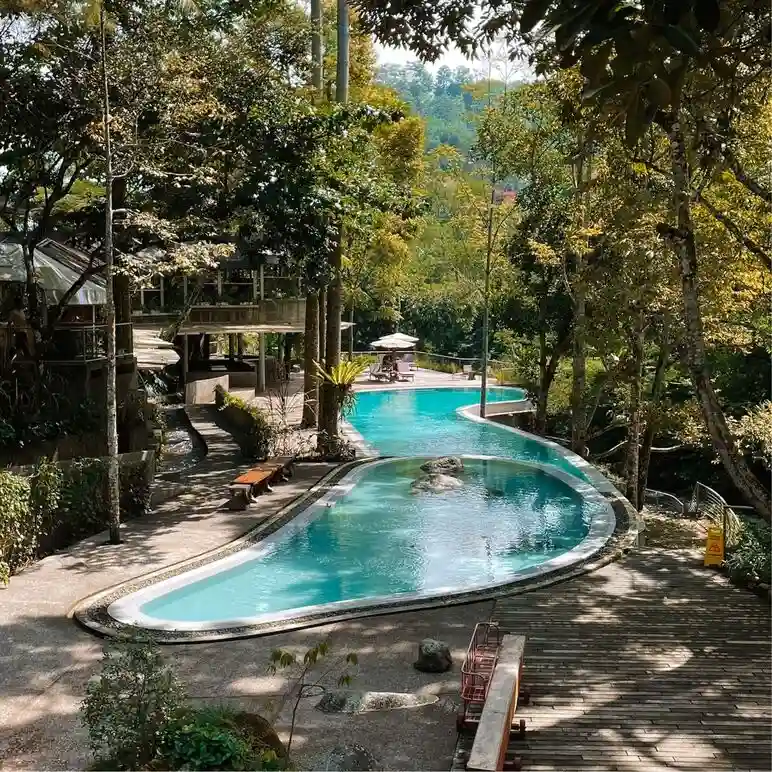
They drove downhill to the Lokananta Museum back in Solo. It used to be Indonesia’s first vinyl record factory, but it transformed into a concert and event venue as records are no longer produced there. Together, they learnt plenty about the history of Indonesian recordings. Indeed, the dioramas were pleasurable, and so was the Lokananta Space next door. Similar to M Bloc in Jakarta, the creative compound featured heaps of food stalls, grassy fields out back, and an amphitheatre.
A couple of cups of tea became their prelude to digging into Nasi Padang to close out the day. They continued with their night routine of making a pit stop at PLN to fully charge the car before retiring in a deep slumber.
The next morning unfolded with a simple, tasty, sizzling bowl of soto ayam. This history junkie was determined to visit Tumurun Private Museum, a family-owned museum showcasing a “fascinating personal collection” of paintings, Korean contemporary works, and installations. The family behind it long ago ran one of the largest textile companies in Southeast Asia, yet recently went bankrupt and therefore flipped their house into a gallery. He glided to the family’s private collection on the first floor and made his way upstairs to the rotating thematic exhibitions.
Colomadu was up next. “Fun fact: Solo actually has two royal courts, Surakarta and Mangkunegaran. The latter owns Colomadu, our next stop,” he shares. Diorama-wise, there wasn’t much to see at this former sugar factory turned museum, but history-wise, it was nothing short of fascinating to Tagor. “The giant old sugar-processing machines are still there.”
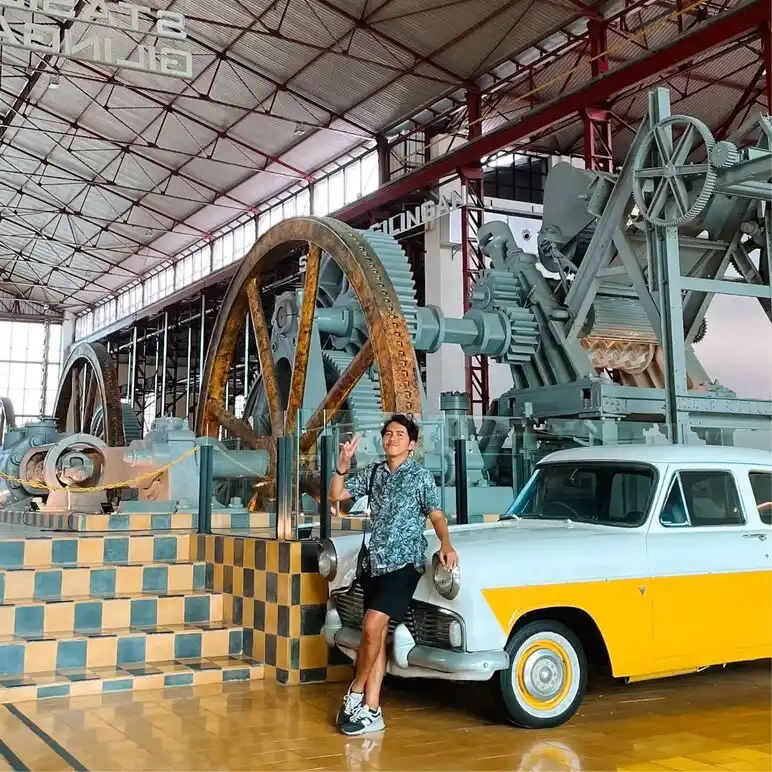
Whenever Tagor’s not gaming or reading, he’s usually camped out at a coffee shop, head down and deep in work mode. Solo’s very own coffee chain, Cold Brew, did the trick before lunchtime rolled around.
“We went to try tengkleng (a goat innards stew) at Pasar Klewer (Klewer Market). It tasted good, but once was enough for me. I wouldn’t eat it on a regular day. It’s… a lot,” he slightly squirms.
Tagor’s sweet tooth cravings kicked in. Pasar Gede houses a myriad of dawet stalls, but the renowned Dawet Bu Dermi was on their list. Clueless about its exact whereabouts, the cousins simply bought from a vendor near the entrance. A thirst yet unquenched led them to further explore the traditional market’s grounds. They eventually found the refreshing treat, adding that “the taste was miles better.”
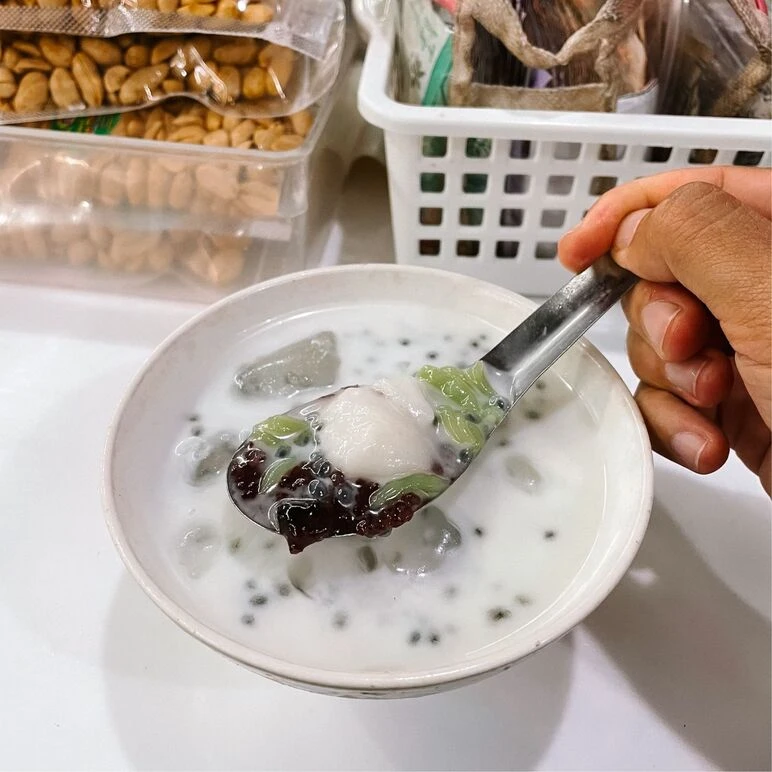
“My cousin asked, ‘Wouldn’t it be wild if we eased into the morning with goat satay?’ Absolutely!” he chuckles. “Sate Buntel Pak Arjo starts selling at 4 AM. We were aiming for 5, but overslept and got there around 6. Still — eating goat satay at 6 AM? That’s an experience.”
Belongings packed, souvenirs secured, and medicines downed, the cousins turned their wheels toward home.
Back on the road
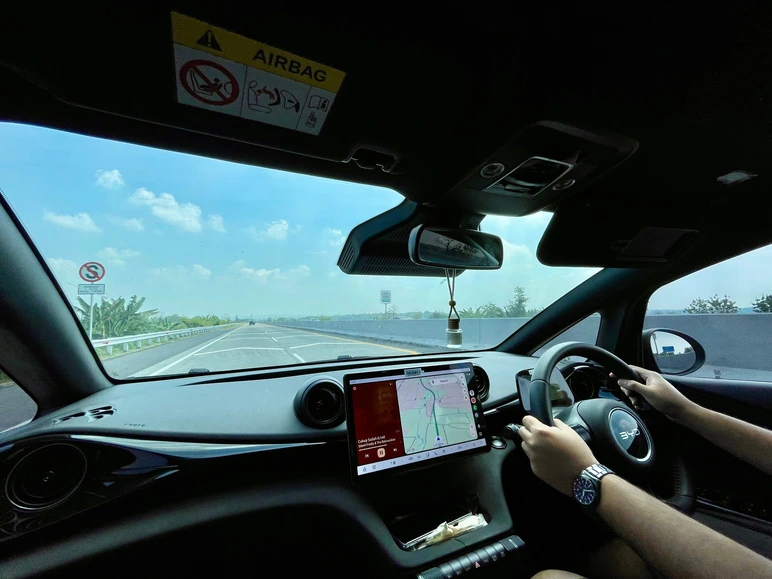
“By then, we’d figured out how to optimise the charging stops, and since we didn’t do any sightseeing on the way back, it was a pretty smooth ride,” he remarks. Their trip back to the capital was at lightning speed, or only about eight hours. Their departure at around noon was interrupted by the rest area at KM 389 and Brebes for the region’s famed boiled and grilled salted eggs for their loved ones, while charging the car for about 30 minutes each at two rest stops.
“Exciting” best describes this road trip to Solo. Tagor reckons it was... well, a little bit different from the usual. “It wasn’t just a getaway. It was an experiment, a test drive into the future — quite literally — because we did the whole thing in an electric car.
“Not just because of the food or the scenery, but because it felt like a glimpse of what travel might look like in a few years. Sure, charging infrastructure still needs work, especially outside big cities, but the potential is huge. EVs are quiet, cost-efficient, and getting more accessible. This trip showed me that the future of road-tripping could be a lot more sustainable, and honestly, just as fun.”
Is road-tripping with an EV actually convenient?
A bunch of variables come into consideration. “If you’re in no rush, it’s great. Extremely relaxing. But if you’re doing it during the peak holiday season… good luck. The charging stations can get crowded. That’s one of the biggest issues — infrastructure’s still limited. Even in the bigger rest areas, you might only find eight or 16 charging slots, max. And not all of them are fast chargers. Some are slow — like, "take-a-nap-while-you-wait" slow that could take up to five hours,” he asserts.
Home charging takes all night, too. For example, 20 kWh can take hours. PLN’s app helps as one can check where the nearest station is, how long the vehicle has been charging, and even as a means to activate the charger.
“If you’re sticking to toll roads, it’s manageable. But if you’re taking the scenic route — local roads, small towns — don’t expect reliable access to chargers. Usually, the only spots are at PLN offices,” he adds.
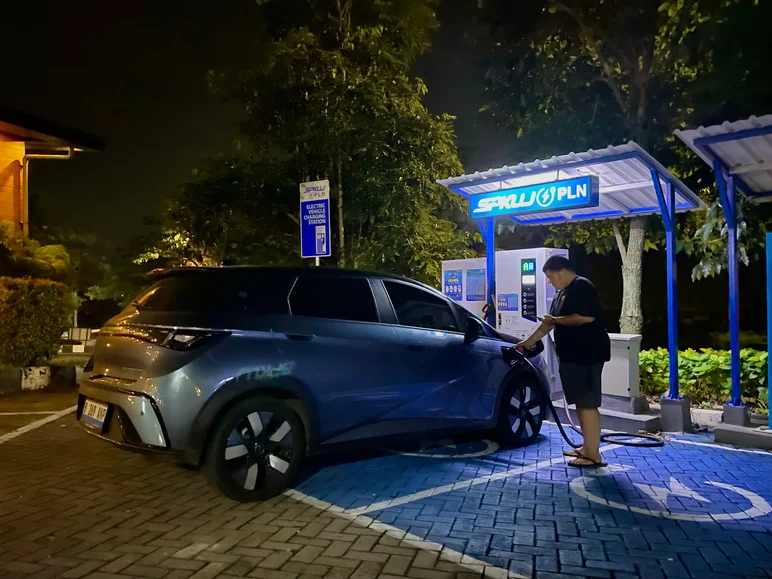
While EVs are fun and futuristic with their cruise mode that enables the driver to lightly tap the gas and hold the wheel while the car glides, road trippers can’t be in a hurry.
Another road trip with an EV in the foreseeable future solely depends on the situation. Tagor still prefers a gas car, especially for long, exploratory road trips off the toll roads due to his desire to see towns, city squares, markets — not just highways.
“If you’re planning a road trip with an EV, my tip would be to plan your battery efficiency like your life depends on it. Know when to charge, where to charge, and how long it’ll take. Make sure every major stop has a charger nearby. Beyond that, it’s like prepping for any road trip: check your tyres, fluids, all that. But with an EV, timing becomes everything,” he emphasises.
Where’s Tagor headed off to next?
Spending five days in Sumba — with some road-tripping involved — is next on his travel bucket list. Although not ready for Sumatra just yet, Tagor reckons Java still has so much to offer, with loads of untold tales. “Meanwhile, I live in Java!” he claims. “I really want to dig deeper into Java before heading overseas. This island isn’t merely about Jogja or Solo. There are so many underrated towns waiting to be explored.”
Who knows, the dream of crossing Java's borders on a motorbike for the one-time national champion for animation for Best Fiction Animation at the Indonesian Student Film Festival 2010 might actually come into fruition soon.



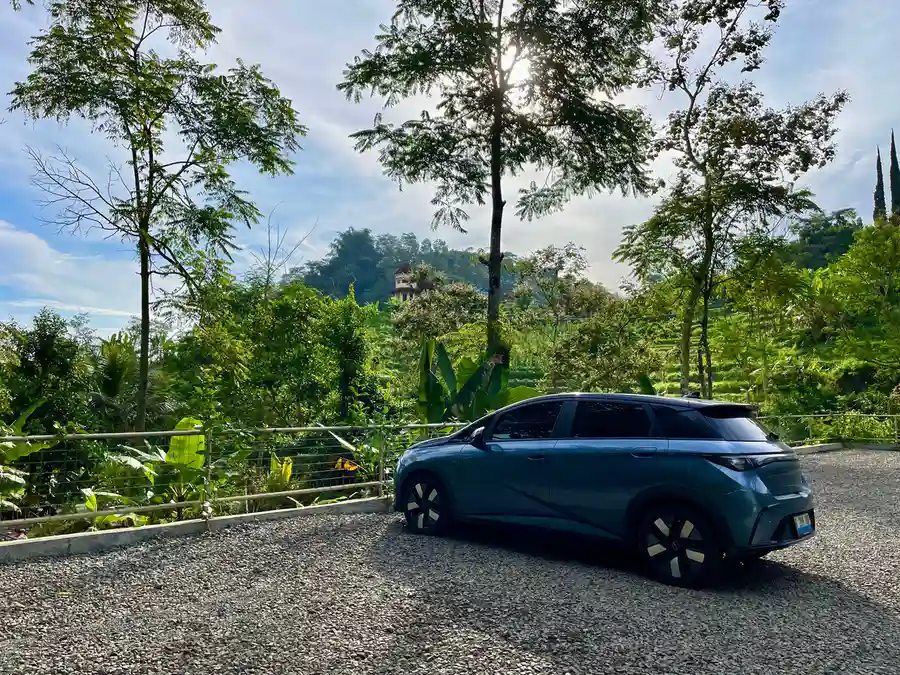
 Mirella Pandjaitan
Mirella Pandjaitan
 Sep 24, 2025
Sep 24, 2025